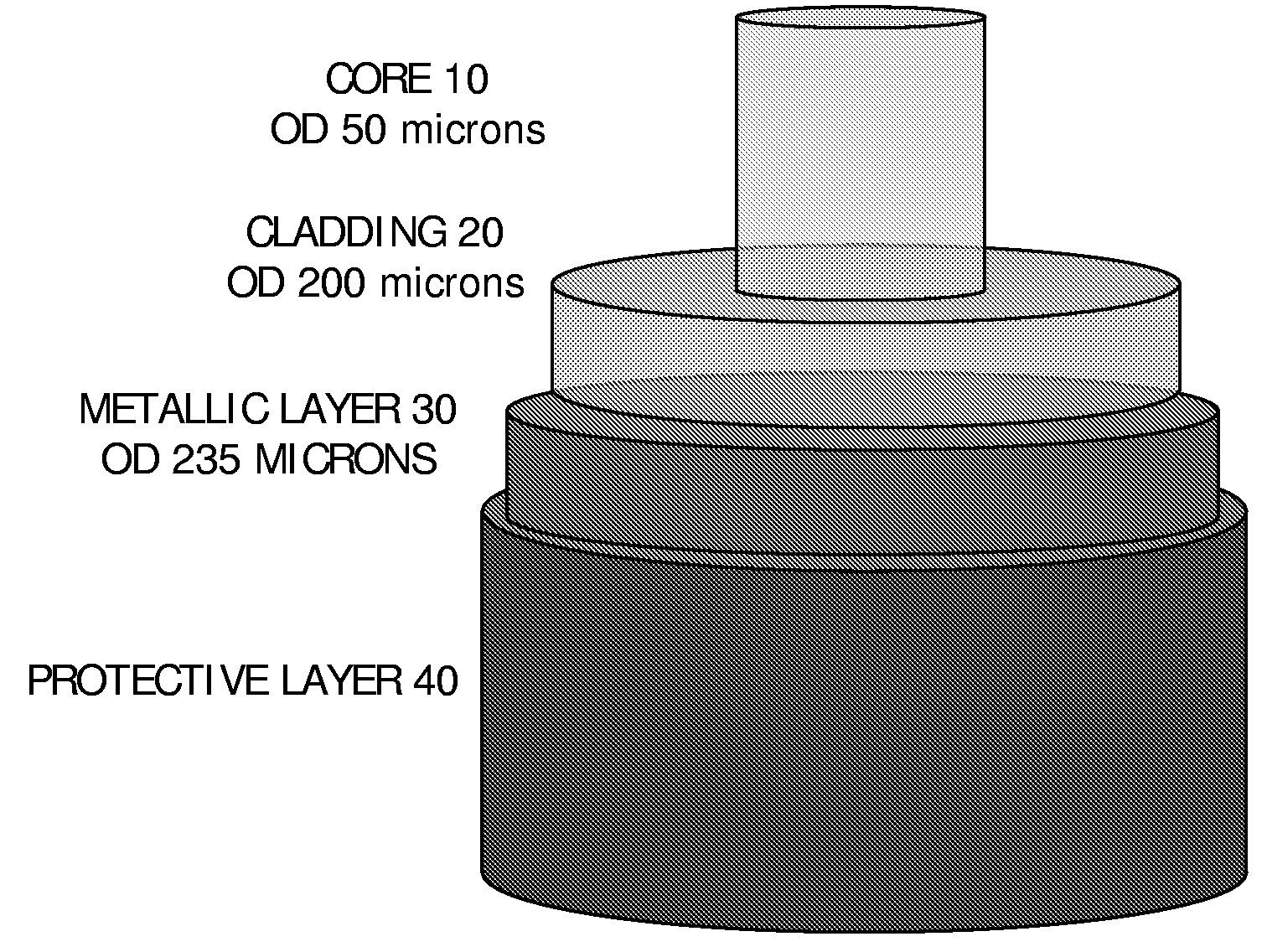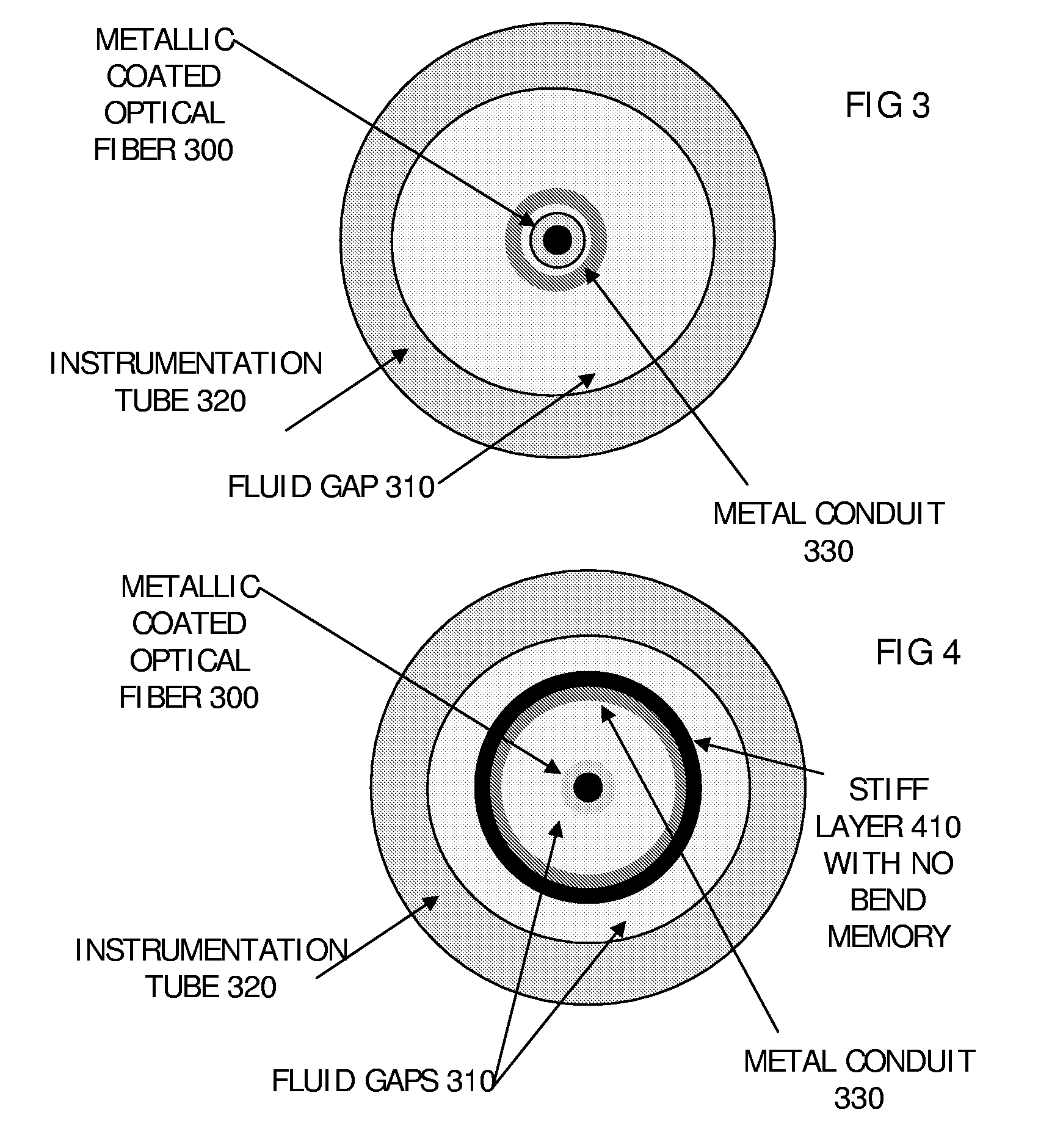Sensing System Using Optical Fiber Suited to High Temperatures
a sensing system and high temperature technology, applied in the field of sensing systems, sensing methods, optical fiber sensing and suited to high temperature environments, can solve problems such as longer useful life, and achieve the effect of good protection
- Summary
- Abstract
- Description
- Claims
- Application Information
AI Technical Summary
Benefits of technology
Problems solved by technology
Method used
Image
Examples
Embodiment Construction
FIGS. 1-5, Sensing Cables for High Temperature
[0070]By way of introduction to the embodiments, a known fiber will be described. FIG. 1 shows a typical known sensing fiber which has a core of 50 μm, a cladding of 125 μm, a protective layer of carbon, of thickness of 5 μm, and an outer protective layer of polyimide of thickness of 20 μm. This can be manufactured using established techniques.
High Temperature Fiber Factors
[0071]The coatings of FIG. 1 are typically rated to 300° C. under ideal conditions. However, it appears that once these fibers are installed inside oil wells, they are failing at temperatures lower than 200° C. This is believed to be due to a combination of two factors.
1. During the pumping installation technique the fiber coating is prone to damage which reduces the level of protection to the fiber. Even in low temperature applications, there has been extensive degradation. It should be noted that pumping requires a flexible, lightweight fiber and so, by necessity, th...
PUM
| Property | Measurement | Unit |
|---|---|---|
| thickness | aaaaa | aaaaa |
| thickness | aaaaa | aaaaa |
| temperatures | aaaaa | aaaaa |
Abstract
Description
Claims
Application Information
 Login to View More
Login to View More - R&D
- Intellectual Property
- Life Sciences
- Materials
- Tech Scout
- Unparalleled Data Quality
- Higher Quality Content
- 60% Fewer Hallucinations
Browse by: Latest US Patents, China's latest patents, Technical Efficacy Thesaurus, Application Domain, Technology Topic, Popular Technical Reports.
© 2025 PatSnap. All rights reserved.Legal|Privacy policy|Modern Slavery Act Transparency Statement|Sitemap|About US| Contact US: help@patsnap.com



